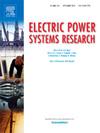通过预测能源控制和实时误差减少,增强光伏系统的BIPV建筑能源自主性
IF 4.2
3区 工程技术
Q2 ENGINEERING, ELECTRICAL & ELECTRONIC
引用次数: 0
摘要
由于太阳能的间歇性,增加了对电网的依赖性,限制了能源的自主性,因此光伏(PV)系统与电网的整合面临挑战。准确的超短期(UST)预测和智能能源管理是提高光伏自用的关键。本研究介绍了能源控制优化预测智能管理系统(ECO-PIMS),这是一个先进的框架,集成了混合预测模型,内部自适应实时误差校正,并通过逻辑控制功能(LCF)动态能源分配。ECO-PIMS采用先进的信号分解技术,包括改进的全集成经验模态分解和自适应噪声(ICEEMDAN)、样本熵(SE)和变分模态分解(VMD)。提出了两种新型混合模型:用于光伏产量预测的ICEEMDAN-VMD-CNN-LSTM-BiGRU (IV-CNNLSTM-BiGRU)和用于能源需求预测的ICEEMDAN-VMD-LSTM-BiGRU (IV-LSTM-BiGRU)。在预测过程中,卷积神经网络(CNN)提取空间特征,长短期记忆(LSTM)网络学习光伏生产的时间模式,双向门控循环单元(BiGRU)细化残差。ECO-PIMS通过基于UST预测在光伏和电网之间动态分配电力来优化实时能源管理。为期7天的模拟表明,带有纠错的PV-Battery-Grid配置将网格的贡献减少到17.7%,而没有纠错的PV-Grid配置将网格的贡献减少到29.7%,带有纠错的PV-Grid设置将网格的贡献减少到32.4%。此外,与传统的CNN和LSTM方法相比,所提出的模型的平均绝对误差(MAE)降低了20%。这项研究使用了来自瑞士Poschiavo的正能量建筑(PEB)的真实测量数据。所提出的方法在MATLAB和Simulink中实现,强调了它们的实用性。本文章由计算机程序翻译,如有差异,请以英文原文为准。

Enhancing BIPV Building Energy Autonomy in PV systems through predictive energy control and real-time error reduction
The integration of photovoltaic (PV) systems into power grids poses challenges due to the intermittent nature of solar energy, which increases grid dependency and limits energy autonomy. Accurate ultra-short-term (UST) forecasting and intelligent energy management are essential to enhance PV self-consumption. This study introduces the Energy Control Optimization Predictive Intelligent Management System (ECO-PIMS), an advanced framework that integrates hybrid forecasting models, internal adaptive real-time error correction, and dynamic energy allocation via a logical control function (LCF). ECO-PIMS employs advanced signal-decomposition techniques, including Improved Complete Ensemble Empirical Mode Decomposition with Adaptive Noise (ICEEMDAN), Sample Entropy (SE), and Variational Mode Decomposition (VMD). Two novel hybrid models are developed: ICEEMDAN-VMD-CNN-LSTM-BiGRU (IV-CNNLSTM-BiGRU) for PV-production forecasting and ICEEMDAN-VMD-LSTM-BiGRU (IV-LSTM-BiGRU) for energy-demand forecasting. In the forecasting process, Convolutional Neural Networks (CNN) extract spatial features and Long Short-Term Memory (LSTM) networks learn temporal patterns for PV production, while a Bidirectional Gated Recurrent Unit (BiGRU) refines residual errors. ECO-PIMS optimizes real-time energy management by dynamically allocating power between PV and the grid based on UST predictions. Simulations over seven days demonstrate that the PV–Battery–Grid configuration with error correction reduces grid contribution to 17.7%, compared to 29.7% without correction and 32.4% in a PV–Grid setup with correction. Moreover, the proposed models achieve a 20% reduction in Mean Absolute Error (MAE) compared to conventional CNN and LSTM approaches. This study uses real measured data from a positive energy building (PEB) in Poschiavo, Switzerland. The proposed methodologies were implemented in MATLAB and Simulink, underscoring their practical applicability.
求助全文
通过发布文献求助,成功后即可免费获取论文全文。
去求助
来源期刊

Electric Power Systems Research
工程技术-工程:电子与电气
CiteScore
7.50
自引率
17.90%
发文量
963
审稿时长
3.8 months
期刊介绍:
Electric Power Systems Research is an international medium for the publication of original papers concerned with the generation, transmission, distribution and utilization of electrical energy. The journal aims at presenting important results of work in this field, whether in the form of applied research, development of new procedures or components, orginal application of existing knowledge or new designapproaches. The scope of Electric Power Systems Research is broad, encompassing all aspects of electric power systems. The following list of topics is not intended to be exhaustive, but rather to indicate topics that fall within the journal purview.
• Generation techniques ranging from advances in conventional electromechanical methods, through nuclear power generation, to renewable energy generation.
• Transmission, spanning the broad area from UHV (ac and dc) to network operation and protection, line routing and design.
• Substation work: equipment design, protection and control systems.
• Distribution techniques, equipment development, and smart grids.
• The utilization area from energy efficiency to distributed load levelling techniques.
• Systems studies including control techniques, planning, optimization methods, stability, security assessment and insulation coordination.
 求助内容:
求助内容: 应助结果提醒方式:
应助结果提醒方式:


